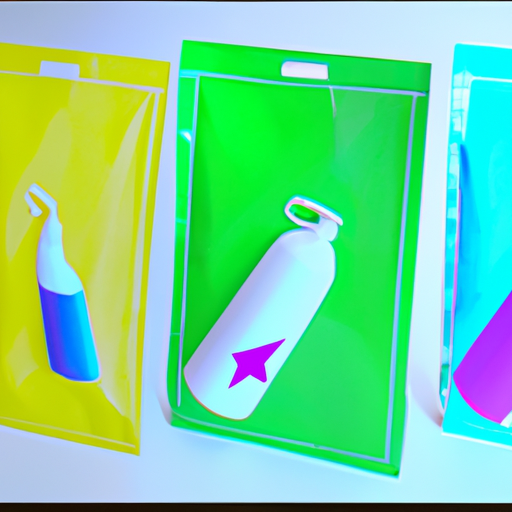
-
Table of Contents
- Package Design for Eco-Friendly Cleaning Products
- The Role of Package Design in Eco-Friendly Cleaning Products
- Key Elements of Package Design for Eco-Friendly Cleaning Products
- 1. Material Selection
- 2. Minimalist Design
- 3. Clear Communication
- 4. Innovative and Functional Packaging
- Case Study: Method’s Sustainable Packaging
- Conclusion
Package Design for Eco-Friendly Cleaning Products

As the world becomes more conscious of the environmental impact of everyday products, the demand for eco-friendly cleaning products has been on the rise. Consumers are actively seeking out cleaning products that are not only effective but also sustainable and environmentally friendly. While the formulation of these products is crucial, the package design plays a significant role in attracting consumers and conveying the eco-friendly message. In this article, we will explore the importance of package design for eco-friendly cleaning products and provide valuable insights on how to create compelling and sustainable packaging.
The Role of Package Design in Eco-Friendly Cleaning Products
The package design of eco-friendly cleaning products serves multiple purposes. It not only protects the product but also communicates the brand’s values and sustainability efforts to the consumers. Here are some key roles that package design plays:
- Brand Identity: The package design serves as a visual representation of the brand. It helps consumers recognize and differentiate the product from competitors. A well-designed package can create a strong brand identity and build trust with consumers.
- Information and Instructions: The package design should clearly communicate important information about the product, such as ingredients, usage instructions, and certifications. This transparency helps consumers make informed choices and understand the eco-friendly aspects of the product.
- Sustainability Message: The package design should visually convey the eco-friendly attributes of the product. This can be achieved through the use of eco-friendly materials, recyclable symbols, or other sustainability certifications. The design should align with the brand’s commitment to sustainability and resonate with environmentally conscious consumers.
- Convenience and Functionality: The package design should be user-friendly and convenient for consumers to use. It should be easy to handle, dispense, and store. A well-designed package enhances the overall user experience and encourages repeat purchases.
Key Elements of Package Design for Eco-Friendly Cleaning Products
When designing packaging for eco-friendly cleaning products, several key elements should be considered to effectively convey the sustainability message and attract consumers. Let’s explore these elements:
1. Material Selection
The choice of materials for packaging is crucial in promoting sustainability. Opting for recyclable, biodegradable, or compostable materials can significantly reduce the environmental impact. For example, using packaging made from recycled plastic or cardboard can help reduce the consumption of virgin materials and promote a circular economy.
Method, a leading eco-friendly cleaning product brand, uses packaging made from 100% post-consumer recycled plastic. Their bottles are not only visually appealing but also align with their commitment to sustainability. By choosing recycled materials, Method showcases their dedication to reducing waste and promoting a circular economy.
2. Minimalist Design
A minimalist design approach can effectively communicate the eco-friendly attributes of a product. Clean lines, simple typography, and a clutter-free design can convey a sense of simplicity and sustainability. Minimalist packaging also reduces material waste and allows the product to stand out on the shelves.
Ecover, a well-known brand in the eco-friendly cleaning product market, adopts a minimalist design for their packaging. Their bottles feature a simple, clean design with a focus on the product’s natural ingredients. The minimalist approach not only aligns with their brand values but also appeals to consumers seeking simplicity and sustainability.
3. Clear Communication
Clear communication is essential in conveying the eco-friendly aspects of a cleaning product. The package design should clearly highlight the product’s sustainable features, such as certifications, eco-friendly claims, and ingredient transparency. This information helps consumers make informed choices and reinforces the brand’s commitment to sustainability.
Seventh Generation, a pioneer in eco-friendly cleaning products, incorporates clear communication on their packaging. They prominently display their certifications, such as USDA Certified Biobased Product and Leaping Bunny Cruelty-Free, to assure consumers of their commitment to sustainability and animal welfare. Clear communication builds trust and credibility with environmentally conscious consumers.
4. Innovative and Functional Packaging
Innovative and functional packaging can enhance the user experience and differentiate eco-friendly cleaning products from conventional ones. Consider incorporating features such as easy-to-use dispensers, refillable options, or packaging that reduces product waste. These features not only add value to the consumer but also align with the sustainability goals of the brand.
Blueland, a startup focused on sustainable cleaning products, offers innovative packaging solutions. They provide reusable bottles and dissolvable cleaning tablets, eliminating the need for single-use plastic bottles. Their packaging design encourages consumers to reduce waste and embrace a more sustainable cleaning routine.
Case Study: Method’s Sustainable Packaging
Method, a brand known for its eco-friendly cleaning products, has successfully implemented sustainable packaging practices. Their packaging design reflects their commitment to sustainability and has contributed to their brand’s success.
Method’s packaging is made from 100% post-consumer recycled plastic (PCR), which reduces the demand for virgin plastic and promotes recycling. The bottles are designed to be easily recyclable, and the labels are printed with soy-based inks, further reducing the environmental impact.
The design of Method’s packaging is visually appealing and stands out on the shelves. The bottles feature vibrant colors and a sleek, modern design that appeals to consumers seeking both style and sustainability. The brand’s commitment to sustainability is clearly communicated through the use of recyclable symbols and eco-friendly claims on the packaging.
Method’s sustainable packaging has resonated with consumers, contributing to their brand’s success and market share. By prioritizing sustainability in their package design, Method has attracted environmentally conscious consumers and built a strong brand identity.
Conclusion
The package design for eco-friendly cleaning products plays a crucial role in attracting consumers and conveying the brand’s commitment to sustainability. By considering key elements such as material selection, minimalist design, clear communication, and innovative packaging, brands can create compelling and sustainable packaging that resonates with environmentally conscious consumers.
Successful brands like Method, Ecover, Seventh Generation, and Blueland have demonstrated the importance of sustainable packaging in the eco-friendly cleaning product market. Their packaging designs effectively communicate their sustainability efforts and contribute to their brand’s success.
As the demand for eco-friendly cleaning products continues to grow, brands must prioritize sustainable package design to differentiate themselves in the market and meet the expectations of environmentally conscious consumers. By embracing sustainable packaging practices, brands can not only reduce their environmental impact but also build a loyal customer base that values sustainability.
